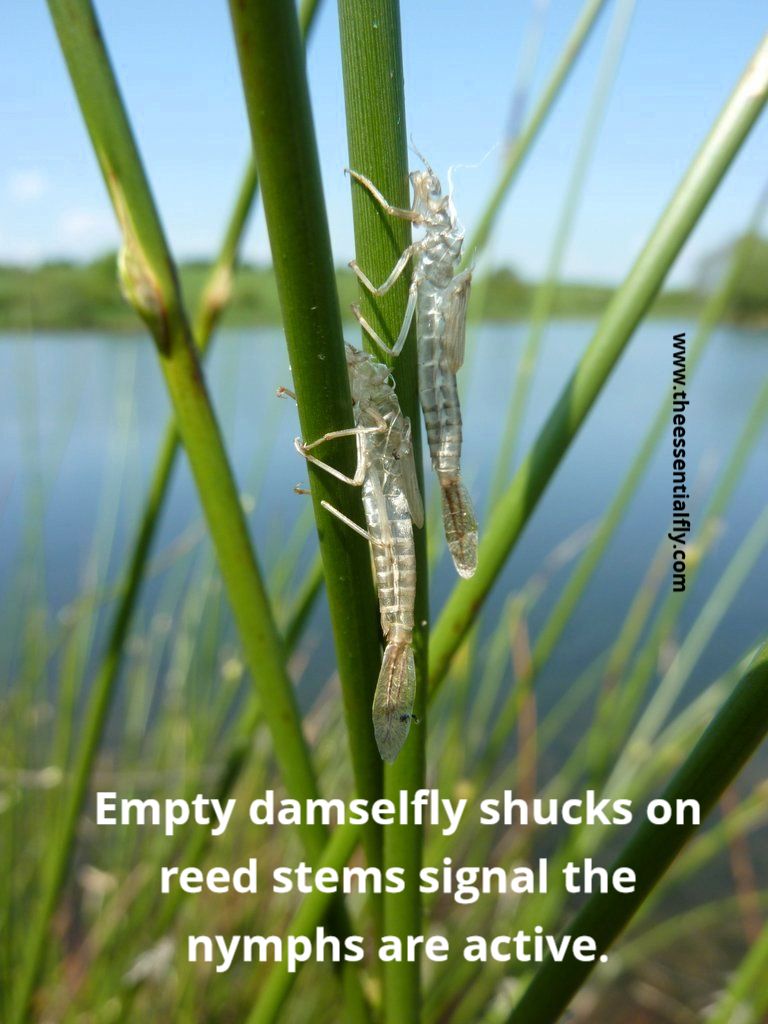June stillwater fishing
What to look for
Obviously the striking blue/red males and olive coloured females flitting about is a sure sign the damselfly carnival has begun. However, on more inclement days the adults tend to keep their heads down. A far better indicator is the calling card of discarded nymphal shucks found on reed stems, or fence posts near water. When you see these, it’s best to act by knotting on an appropriate nymph (below).

What to use
Unless it’s blowing a gale then a floating is the best way of presenting your damsel nymph. Slick and supple the Cortland WF 444SL will get your fly out to where it matters in double quick time. As damselfly nymphs tend to swim just beneath the surface there’s no need for super long leaders. A 9ft Profil leader of 7lb with 3ft of Wychwood 6.5lb silk mode attached gives you 12ft overall.
This should be cast out and worked back with short, sharp tweaks to give your nymph a degree of movement. Remember to hold the rod tip approx 18 inches clear of the water as the now sagging line off your rod tips acts as a cushion against violent takes, which are common when trout smash into damsel nymphs. Try to search water with a ruffled surface, namely a cross-wind as this not only sweeps your fly round on a seductive curve, but masks any disturbance of casting and retrieving.
If a gale whisks up then controlling a floating line can become difficult, especially given a headwind, or drifting from a boat. Now, a clear intermediate line will give you and edge. We prefer those with a slower sink rate of 1.5-2 secs, like the Rio aqua-lux II. Now, you can potentially shorten your leader up too, as this prevent ‘sagging between fly and fly line to keep you in more direct contact with the business end of things.
With regards to flies, many imitations have long marabou tails. Granted these appear are larger than the natural nymphs., but they provide a lovely sinuous swimming motion when retrieved, especially those patterns with beadheads that accentuate the wiggling swim action of the real nymph. It’s the reason too we advise short, sharp draws on the fly line to give your fly a sink and draw retrieve in the water.



















